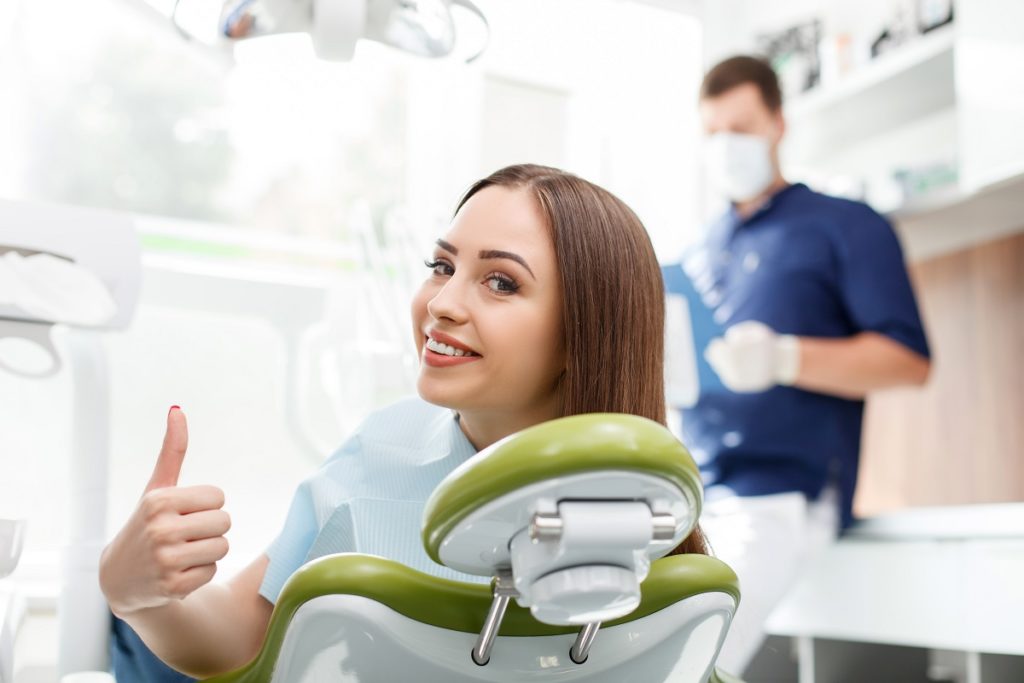Better oral health leads to a healthy smile, and a healthy smile supports better health overall!
Too often we feel we have the perfect oral health, but a regular dental checkup is a must. Taking care of your teeth alone is not enough. Make sure you have excellent oral health for life by reaching out to a Newport Beach dentist on a regular basis. The dentist will examine the condition of your teeth during the routine dental exam and instruct you on how to achieve the best oral health.
A routine dental checkup consists of several steps. From prepping you for the exam to the cleaning of your teeth. Read on to know the detailed description of what a routine dental checkup looks like.
Hygiene Consult
Once the hygienist preps you for an exam, take your time to voice any specific concerns you have regarding your oral health. Once the hygienist is well-aware of your particular oral requirements, he will prepare all the tools that he will need. The tools range from mirrors to scalers to the specific kind of x-rays or any other particular instrument.
Update your Medical History
Let your hygienist know your medical history. It is crucial that the hygienist know if you were on medications or if you have any specific surgeries since you visited the dentist last time.
It is essential that you mention all the updates regarding your overall health before any dental procedure. It helps the dentist to plan the treatment and avoid any dental emergencies.
X-rays
Once your initial consultation is over, the next step to your dental exam is dental x-rays. It may include one or more of the following.
1. Full mouth x-rays (FMX)
FMX is particularly viable for those who have multiple teeth problems and those who haven’t visited the dentists for over a five year period. FMX allows comprehensive teeth examination. It is a series of 18-20 x-rays to review your dental problems carefully. It includes four bitewings and PAs of each tooth.
2. Bitewings
Bitewing is usually a set of x-rays that a patient receives during the routine checkup. They are the most critical type of x-rays for diagnosing your cavities or tooth decay. It also helps the dentist to see if you have any bone height, calculus, previous restorations, or any other abnormalities.
Bitewing is mainly used for monitoring the back teeth since you can easily monitor cavities on your front teeth without x-rays. Dentists usually take two bitewings for children and four bitewings for adults. Taking bitewings can help us avoid major dental problems.
3. Periapical (PAs)
PAs are essential for diagnosing dental abscesses. As its name suggests, periapical means around the tooth or the apex of the tooth. It helps to diagnose any of the infection or the pathology that occurs near to your tooth. These x-rays allow the monitoring of the entire tooth, including its root. These x-rays ensure there is no underlying problem with the tooth, before restoring it with a large crown or filing.
4. Panorex
A panorex film covers the whole structure from your nose to the base of your chin. It is taken once every five years. The panorex film is also used to monitor the wisdom teeth in adults and teenagers. They help the physician evaluate the space before the impact of the new tooth, and it also helps to measure the density of the jaw bone. Various abnormalities like tumors can likewise be spotted with this sort of radiography.
Gum examination
Once you are done with x-rays, the next step is to test your mouth for any gum diseases. Gum disease or gum infection is a very critical issue. It can damage soft tissue and cause tooth loss. To avoid this, it is essential that you get a periodontal evaluation once a year.
If your gum screening determines you have some gum disease, then you will have to go through root scaling or root planing. It usually includes curing the gum infection and smoothing the roots.
Proper extraoral and intraoral examination is a must at each appointment which includes the examination of your tongue, throat, face, head, and neck. This is to search for any indications of swelling, redness, or signs of disease.
Oral prophylaxis/ dental cleaning
If you are lucky enough not to have any gum infections and your gums are healthy, then you can proceed to tooth cleaning. Deep cleaning is a specific procedure performed by the dentist to remove tartar and plaque on your teeth.
Plaque is a whitish, sticky layer of dirt on your teeth which can be removed through proper brushing. If it is not removed well, it can solidify and progress toward becoming tartar. You can’t remove tartar with simple brushing and flossing, only deep cleaning or prophylaxis can do that. If that plaque and tartar develop on your teeth, they can cause many other oral problems.
The hygienist will remove tartar and plaque buildup on your tooth surface using some special instruments. They will provide you fluoride treatment, which is vital for preventing sensitivity and cavities.
The dental exam
During the dental exam, the Newport Beach dentist will check various aspects like cavities, gum levels, restorations, etc. using x-rays. Your dentist will also check for any unseen symptoms like precancerous tissues through oral cancer screening. Your mouth will be examined to ensure you do not have a TMJ disorder.
Fortunately, if you pass your initial assessment with flying colors, your next appointment will be scheduled for the next six months for checkup and cleaning.
Your oral health matters so do not let another day go without having a dental exam. Reach out to a Newport Beach dentist like F. Anthony Rich DDS for a thorough dental examination.
